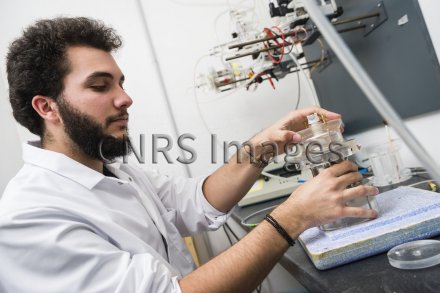Production year
2017

© Cyril FRESILLON/CRCA /CNRS Images
20170048_0132
Preparation of fruit flies for conditioning followed by a memory test. For conditioning, the fruit flies are placed in a cylinder with six holes, with 40 flies per hole. First, they are exposed to an odour together with an immediate electric shock. They are then exposed to a different odour without any shock. This cycle may be repeated several times to engage their long-term memory. The third phase, which takes place on another device, involves placing the flies between the first odour, on one side, and the second odour, on the other. It seems that the number of conditioned fruit flies that move towards the second odour (without a shock) is 30-40% higher in comparison to so-called "naive" (unconditioned) fruit flies. Other parameters can also be analysed, such as how social signals or nutrients present in food affect memory. The aim of these tests is to understand how learning works, and more specifically how neural networks function during this process.
The use of media visible on the CNRS Images Platform can be granted on request. Any reproduction or representation is forbidden without prior authorization from CNRS Images (except for resources under Creative Commons license).
No modification of an image may be made without the prior consent of CNRS Images.
No use of an image for advertising purposes or distribution to a third party may be made without the prior agreement of CNRS Images.
For more information, please consult our general conditions
2017
Our work is guided by the way scientists question the world around them and we translate their research into images to help people to understand the world better and to awaken their curiosity and wonderment.